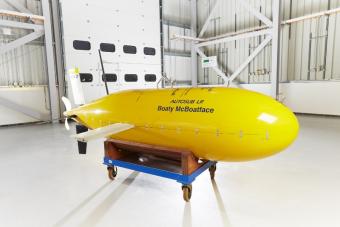The NOC’s Autosub Long Range is joining ocean scientists from the University of Southampton and British Antarctic Survey (BAS) on an expedition to study some of the deepest and coldest abyssal ocean waters on earth – known as Antarctic Bottom Water (AABW) – and how they affect climate change.
Engineers from NOC will assist the team of researchers to assess water flow and underwater turbulence in the Orkney Passage, a region of the Southern Ocean around 3,500m deep and roughly 500 miles from the Antarctic Peninsula.
Autosub Long Range is the latest type of autonomous underwater vehicle (AUV) developed by the NOC.
Dr Maaten Furlong, Head of Marine Autonomous and Robotic Systems explains “We have a long history of developing and operating autonomous underwater vehicles in support of UK science with our first science campaigns in the late 1990s. More recently we have been pioneering the development and use of long range underwater and unmanned surface vehicles”
“The deployment of Autosub Long Range in the Antarctic expands our robotic vehicle capability and places us at the forefront of AUV development”
Autosub Long Range is now known as 'Boaty McBoatface', following last year’s campaign by the Natural Environment Research Council to name the UK’s new polar research ship. While the ship will be named after famous naturalist and broadcaster Sir David Attenborough, the popular winner of the contest – 'Boaty McBoatface'– lives on in the form of an unmanned submersible that is now embarking on its first Antarctic research mission.
The DynOPO (Dynamics of the Orkney Passage Outflow) expedition will travel to the Southern Ocean aboard the BAS research ship RRS James Clark Ross, departing Punta Arenas in Chile on Friday 17 March. The researchers will use a combination of specialised instruments deployed from a ship, instruments moored to the seafloor, as well as measurements made by 'Boaty', to measure ocean turbulence.
This research is funded by Natural Environment Research Council (NERC).

